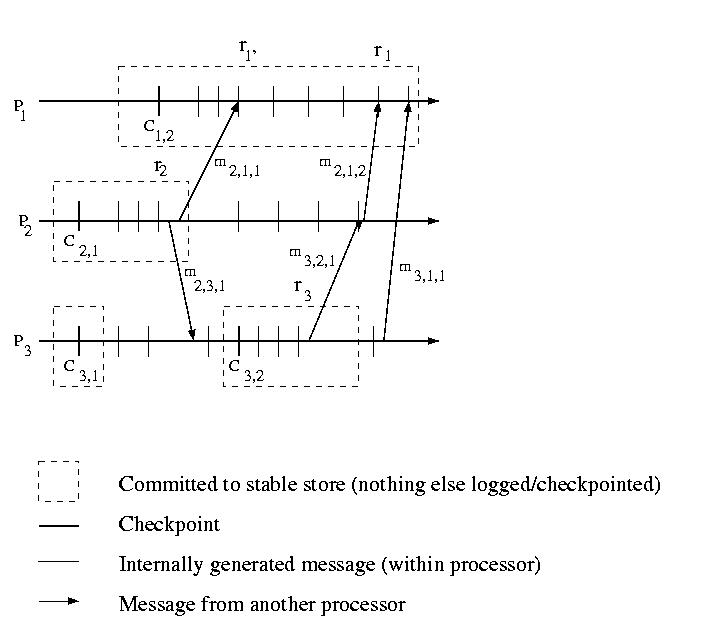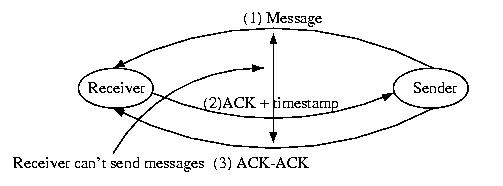The most intuitive technique for logging a system is synchronous
logging. Synchronous logging requires that all messages are logged
before they are passed to the application. In the event of a failure,
recovery can be achieved by playing back all of the logs. Occasional
checkpointing can allow the deletion of prior log entries.
This approach does work, but it is tremendously expensive.
Messages cannot be passed to the application, until the messages
are committed to a stable store. Stable storage is usually, much
slower than RAM, &c. Sometimes performance can be improved by
carefully managing the I/O device, e.x. using one disk for the log
file to avoid seek delays, but it is still much slower than
astable storage.
In order to avoid the performance penalty associated with synchronous
logging, we may choose to collect messages in RAM and to write them out
occasionally as a batch, perhaps during idle times. If we take this
approach, we have a similar management problem to that of uncoordinated
checkpoints. Some messages may be logged, while others may not be logged.

Our examples above assumed that messages would be logged by the
receiver. Mosat of our discussion of logging will, in fact, be focused
on receiver-based techniques. But, before we dive into these, let's
take a quick look at logging messages at the sender.
Sender based logging is very important in those cases where receivers
are thin or unreliable. In other words, we would want to log messages
on the sender if the receiver does not have the resources to maintain
the logs, or if the receiver is likely to fail. This might be
the case, for example, if the sender is a reliable server and the
receiver a portable mobile device.
So, let's assume that each sender logs each message it sends and
that the receiver logs nothing. Recovery isn't quite so easy as
having each sender play back its logs. Although each sender can play the
messages back in the same order in which they were dispatched,
there is no way to order the messages among the senders.
One solution to this problem is to follow the following protocol:
- The sender logs the message and dispatches it.
- The receiver receives the messaeg and ACKs it with the current
time (local to the receiver).
- The sender adds the timestamp contianed in the ACK to its log
entry to the message -- th message is now fully logged
If the above protocol is followed, the timestamp can be used to
ensure that messages from multiple servers are processed by the
receiver in the proper order. This is because all of the timestamps
were assigned by the client, so clock skew is not a problem.
(The timestamp can be as simple as a receive sequence number).
But there is one small problem. Consider Sender
sending a Message to Receiver. Now consider the same Sender
sending a message, m', to Receiver. If the Receiver fails
before it ACKS m, it is unknown whether or not m was received by
the Receiver before the Sender dispatched m' -- we can't
establish whether or not a causal relationship exists.
One solution to this problem is to require that the sender send an
and ACK-ACK to the receiver. If the receiver blocks until it receives
the ACK-ACK, the order of the messages will be clear.

Given this protocol, recovery is very, very straight-forward. Upon
reinitialization, the failed receiver sends a message to all other hosts
in the system with the number of the last message that it remembers ACKing.
The senders then replay their logs, including the receiver-assigned sequence
numbers. The receiver applies these messages in the order of their
sequence number. The senders know to ingore the responses to these messages.
This process leads to a very simple, uncomplicated recovery.

